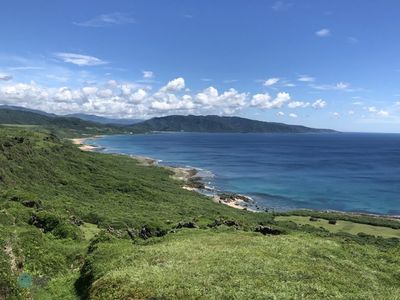Coral Reefs Crisis in Taiwan

Where can you find corals in Taiwan?
Taiwan is famous for its marine life and abundance of coral reefs. The best developed fringing reefs are mostly centered in Hengchun township located in Pingtung county, whereas the rich coral reefs are crowded in the offshore islands, Lan-yu and Green Island. There are up to 250 species of corals all over the shores of Taiwan except the sandy west coast areas. Scuba divers all around the world tend to come here for the coral views and the marine life, making it one of the most popular activity nearshore.
The phenomenon of coral bleaching in Taiwan
Taiwan used to be the “Coral Kingdom.” However, in the recent decade, coral reefs around the coast of Taiwan is experiencing coral bleaching. Even though coral reefs are one of the longest living animals, one third of the coral population is dying due to the increasing ocean water temperature. Air pollution and all environmental change resulted by humans disrupted the water quality and the original temperature causing deaths to the beautiful coral reefs. Investigation done by Ocean Conservation Administration shows that in most places, only some corals are bleached. However, on the east coast of Taiwan, most corals are moderately bleached. In the south, the entire community of coral reefs are bleaching. The Coral Reef Observation System of the National Oceanic and Atmosphere Administration in Taiwan has already announced coral bleaching alert to level 2, which means that there may be serious coral bleaching or death.

Causes of coral bleaching
Corals are extremely sensitive to their surroundings. With the dramatic changes of climate in the recent decade, seawater temperatures has started to rise. Taiwan has experienced fewer typhoons these years, which lead to higher ocean temperatures. While the ideal water temperature range for coral growth is 20-28°C, the Taiwanese water temperature reached 30°C in 2020, and it is continually rising. At this temperature, corals expel the symbiotic algae, which is responsible for their color, living in their tissues. Without the algae, bleaching occurs.
Other than the continuous abnormal warming of the planet, human activities such as agriculture can also harm coral growth. The agricultural pesticides that flow into rivers end up into the ocean, which may disrupt coral growth cycles.
Impacts of coral bleaching
Taiwan’s coral reef community makes up one-third of the world’s variety of species. Many species may go extinct if the bleaching continues. In addition, coral bleaching has the most direct impact on marine biodiversity. This is because corals support one quarter of the fish species, and also many other marine animals. Its death would cause a loss of habitat and thus endanger the marine species.
Not only are marine ecosystem affected, coral bleaching is also harmful for certain industries. A healthy coral reef ecosystem is a million-dollar-asset for local communities. Local communities would suffer from a loss of revenue due to reduced tourist activities. Therefore, the reefs damaged by coral bleaching will negatively impact the livelihood of industries and the economy.